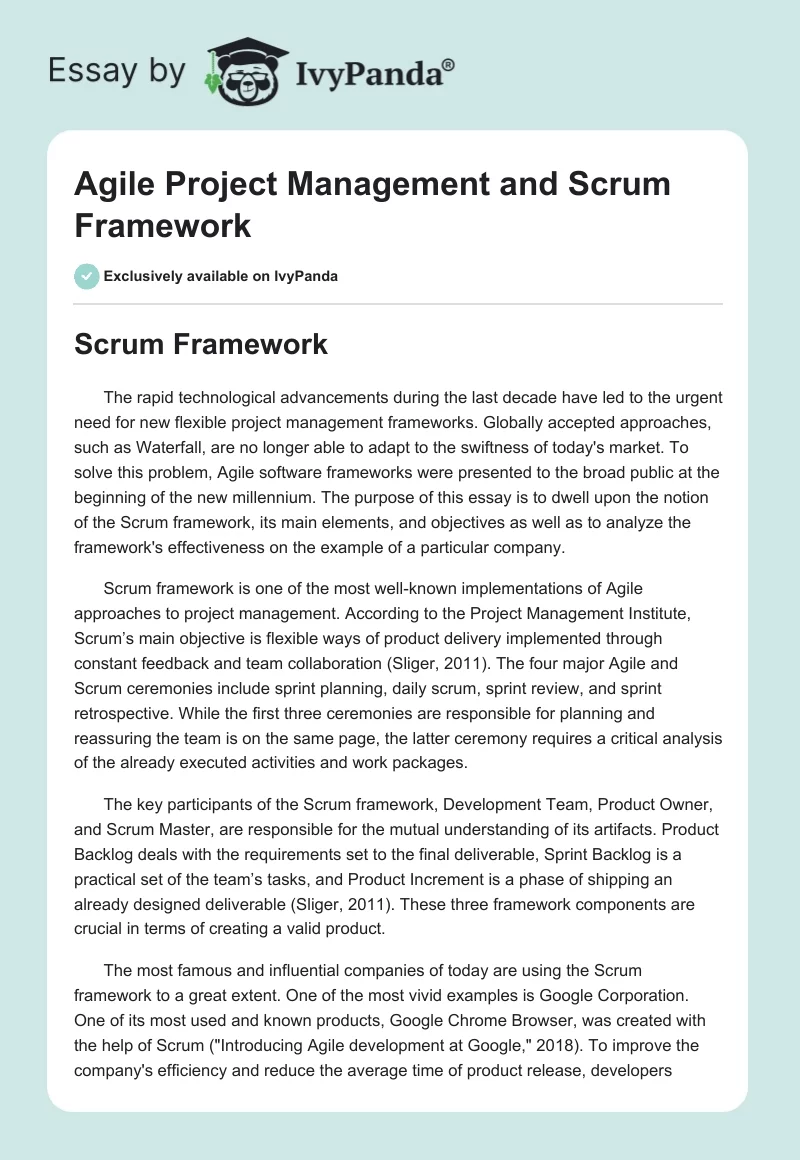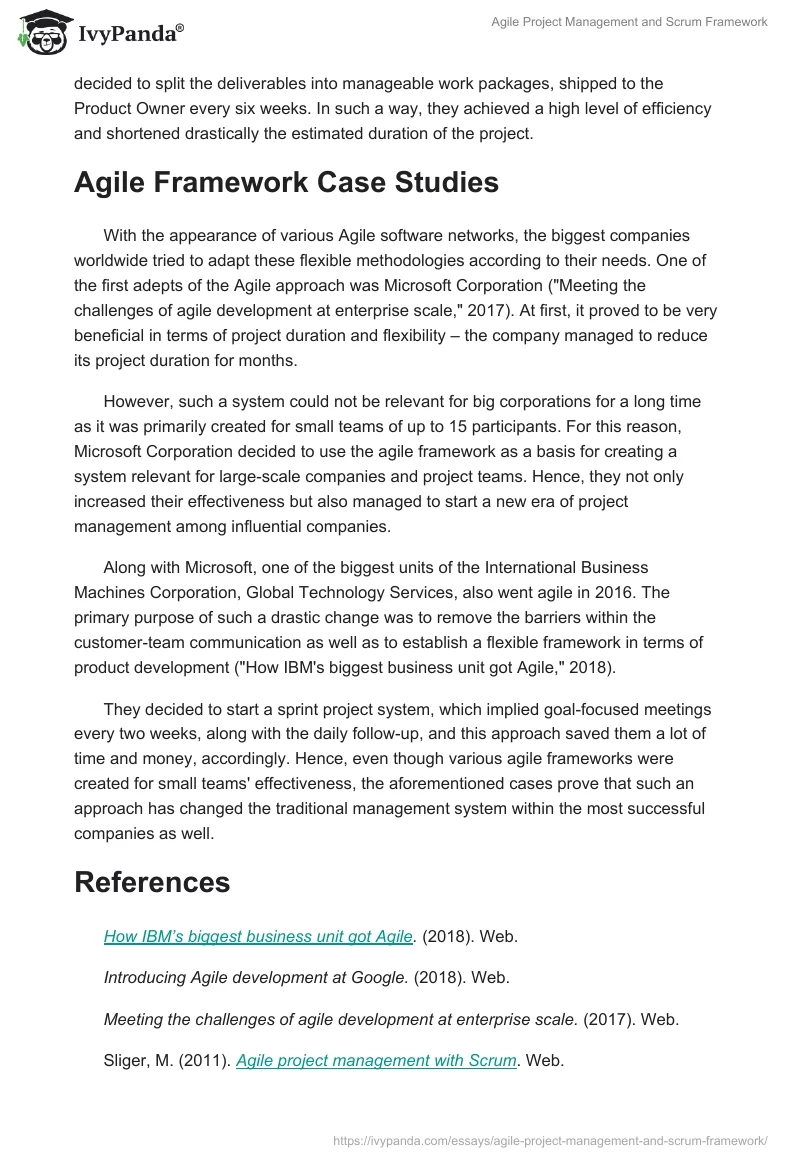Scrum Framework
The rapid technological advancements during the last decade have led to the urgent need for new flexible project management frameworks. Globally accepted approaches, such as Waterfall, are no longer able to adapt to the swiftness of today’s market. To solve this problem, Agile software frameworks were presented to the broad public at the beginning of the new millennium. The purpose of this essay is to dwell upon the notion of the Scrum framework, its main elements, and objectives as well as to analyze the framework’s effectiveness on the example of a particular company.
Scrum framework is one of the most well-known implementations of Agile approaches to project management. According to the Project Management Institute, Scrum’s main objective is flexible ways of product delivery implemented through constant feedback and team collaboration (Sliger, 2011). The four major Agile and Scrum ceremonies include sprint planning, daily scrum, sprint review, and sprint retrospective. While the first three ceremonies are responsible for planning and reassuring the team is on the same page, the latter ceremony requires a critical analysis of the already executed activities and work packages.
The key participants of the Scrum framework, Development Team, Product Owner, and Scrum Master, are responsible for the mutual understanding of its artifacts. Product Backlog deals with the requirements set to the final deliverable, Sprint Backlog is a practical set of the team’s tasks, and Product Increment is a phase of shipping an already designed deliverable (Sliger, 2011). These three framework components are crucial in terms of creating a valid product.
The most famous and influential companies of today are using the Scrum framework to a great extent. One of the most vivid examples is Google Corporation. One of its most used and known products, Google Chrome Browser, was created with the help of Scrum (“Introducing Agile development at Google,” 2018). To improve the company’s efficiency and reduce the average time of product release, developers decided to split the deliverables into manageable work packages, shipped to the Product Owner every six weeks. In such a way, they achieved a high level of efficiency and shortened drastically the estimated duration of the project.
Agile Framework Case Studies
With the appearance of various Agile software networks, the biggest companies worldwide tried to adapt these flexible methodologies according to their needs. One of the first adepts of the Agile approach was Microsoft Corporation (“Meeting the challenges of agile development at enterprise scale,” 2017). At first, it proved to be very beneficial in terms of project duration and flexibility – the company managed to reduce its project duration for months.
However, such a system could not be relevant for big corporations for a long time as it was primarily created for small teams of up to 15 participants. For this reason, Microsoft Corporation decided to use the agile framework as a basis for creating a system relevant for large-scale companies and project teams. Hence, they not only increased their effectiveness but also managed to start a new era of project management among influential companies.
Along with Microsoft, one of the biggest units of the International Business Machines Corporation, Global Technology Services, also went agile in 2016. The primary purpose of such a drastic change was to remove the barriers within the customer-team communication as well as to establish a flexible framework in terms of product development (“How IBM’s biggest business unit got Agile,” 2018).
They decided to start a sprint project system, which implied goal-focused meetings every two weeks, along with the daily follow-up, and this approach saved them a lot of time and money, accordingly. Hence, even though various agile frameworks were created for small teams’ effectiveness, the aforementioned cases prove that such an approach has changed the traditional management system within the most successful companies as well.
References
How IBM’s biggest business unit got Agile. (2018). Web.
Introducing Agile development at Google. (2018). Web.
Meeting the challenges of agile development at enterprise scale. (2017). Web.
Sliger, M. (2011). Agile project management with Scrum. Web.


